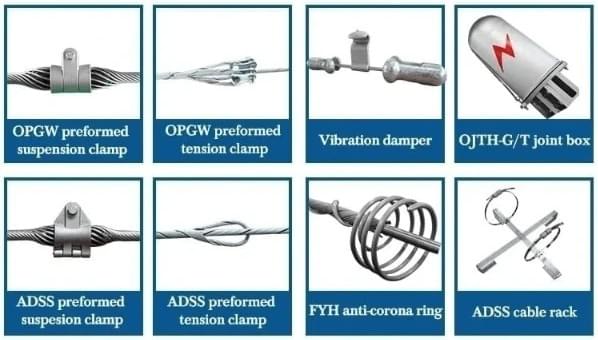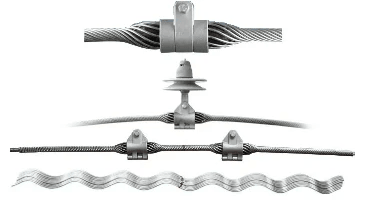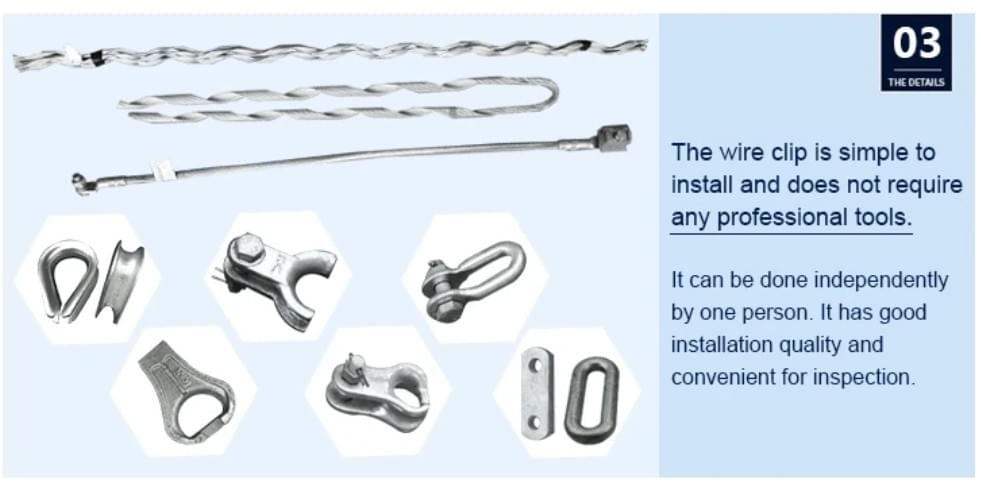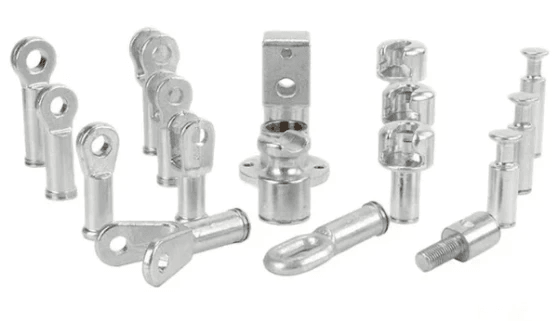Introduction
But what is a clevis type connection? Essentially, it's a U-shaped connector that allows for the secure attachment of rods or other components to pivot or rotate. Understanding the different types of clevis connectors is crucial, as there are primarily two types: the single and double clevis connector, each serving unique purposes in various applications.
Understanding Clevis Connectors
At its core, a clevis connector consists of a forked end that accommodates a pin or bolt, creating a reliable joint for movement. Clevis links are commonly used in applications where flexibility and strength are paramount. So, what connects to a clevis? Typically, they link rods to other machinery parts or structural elements, making them indispensable in industries ranging from construction to automotive engineering.
The Importance of Quality Connectors
Quality matters when it comes to selecting clevis connectors; inferior products can lead to failures that compromise safety and performance. A well-made clevis ensures durability and reliability under load conditions while preventing unexpected disengagement during operation. Investing in high-quality connectors not only enhances safety but can also save you money long-term by reducing maintenance costs and downtime.
Key Considerations for Selection
Selecting the right clevis connector requires careful consideration of several factors including load requirements, material properties, size compatibility, and design features. It's essential to assess your specific needs before making a purchase decision; after all, choosing the wrong connector could lead to catastrophic failures or inefficiencies in your project. By understanding these key considerations upfront, you can make an informed choice that aligns with both your budget and operational demands.
Assess Your Load Requirements

Understanding the weight capacities that your connectors can handle will ensure safety and efficiency in your applications. In this section, we’ll dive into the nitty-gritty of determining weight capacities, considering safety factors in calculations, and exploring real-world applications that rely on these vital components.
Determining Weight Capacities
To start off, what is a clevis type connection? It’s a versatile fastening method often used in various industries to connect components securely. Determining the weight capacities of a clevis connector involves understanding both the maximum load it can bear and how that load will be distributed during operation. For instance, if you're using a double clevis connector for heavy machinery, knowing its rated capacity helps prevent catastrophic failures.
In practice, you should always refer to manufacturer specifications when assessing weight limits. Different materials and designs can significantly impact how much weight a clevis link can support without compromising safety or functionality. By taking the time to analyze these specifications, you ensure that your chosen connectors are up to the task.
Safety Factors in Load Calculation
While knowing the maximum weight capacity is essential, it’s equally important to consider safety factors in load calculations. A good rule of thumb is to use a safety factor of at least 1.5 times the expected maximum load when choosing a clevis connector for critical applications. This means if you anticipate needing support for 1000 pounds, select connectors rated for at least 1500 pounds.
Safety factors account for unforeseen circumstances such as dynamic loads or unexpected stresses on connections—things like vibrations or sudden impacts that might occur during operation. Additionally, it's wise to regularly inspect connections and replace any worn-out parts to maintain integrity over time. Remember: better safe than sorry!
Real-World Applications and Their Needs
Real-world applications vary widely when it comes to using clevis connectors; they’re found everywhere from construction sites to automotive assemblies! For example, in construction equipment like cranes or excavators, robust double clevis connectors are essential for lifting heavy loads safely and efficiently. Understanding what connects to a clevis helps determine not just strength but also compatibility with other components in your system.
In automotive settings, clevis links serve as critical parts connecting various systems—from suspension setups to braking mechanisms—ensuring everything operates smoothly under significant stress conditions. Each application has unique needs based on its operational environment; thus selecting the right type is key! Whether you're dealing with high-stress environments or lighter-duty tasks, aligning your choice with real-world demands makes all the difference.
Material Matters

The two most common materials used for clevis connectors are steel and aluminum, each with its unique set of advantages and disadvantages. Understanding these differences is key to making an informed decision about what will best suit your application.
Comparing Steel vs. Aluminum Connectors
Steel clevis connectors are renowned for their strength and load-bearing capabilities, making them ideal for high-stress applications where durability is paramount. On the other hand, aluminum connectors offer a lighter weight alternative that can be easier to handle while still providing decent strength for many applications. When considering What is a clevis type connection? it's essential to think about the specific demands of your project—steel may be better suited for heavy machinery, while aluminum could shine in aerospace or automotive contexts.
In addition to weight considerations, steel connectors often come with a higher resistance to deformation under heavy loads compared to their aluminum counterparts. However, this increased strength does come at a cost; steel is generally more susceptible to corrosion unless treated with protective coatings. So when asking What are the two types of clevis? remember that choosing between steel and aluminum often boils down to balancing weight against strength based on the application.
Corrosion Resistance and Longevity
Corrosion resistance plays a significant role in determining the longevity of any clevis connector you choose. Steel connectors typically require additional coatings or treatments—like galvanization—to withstand harsh environments effectively; otherwise, they may rust over time when exposed to moisture or chemicals. In contrast, aluminum naturally forms a protective oxide layer that helps resist corrosion without requiring extensive treatment.
The longevity of your clevis connector also ties into how well it performs under various environmental conditions. For example, if you're using a clevis link in marine settings or areas prone to high humidity, opting for an aluminum option could save you from frequent replacements due to corrosion-related failures. Therefore, understanding What connects to a clevis? goes beyond just mechanical compatibility; it also involves considering environmental factors that may affect material performance over time.
Insight on Spark Fittings Materials
Spark Fittings offers an impressive range of materials specifically designed for various applications involving clevis connectors—including both steel and aluminum options tailored for different needs. Their products often feature enhanced corrosion resistance through advanced coatings or by utilizing specialized alloys that improve overall durability without sacrificing performance metrics like tensile strength or weight capacity.
When exploring Spark Fittings' offerings like double clevis connectors or standard single variants, you'll find detailed specifications that help clarify which material best suits your requirements—whether you need something robust enough for heavy lifting or lightweight enough for quick assembly in less demanding situations. Ultimately, knowing what is available allows you not only to select the right type but also ensures you're investing wisely in materials designed specifically for long-lasting use.
Size and Compatibility

A well-chosen clevis type connection not only ensures that your equipment operates smoothly but also enhances safety during operation. In this section, we’ll delve into how to choose the right dimensions, ensure proper fit with other components, and highlight common standards you should keep in mind.
Choosing the Right Dimensions
Choosing the right dimensions for your clevis connector is crucial for optimal performance. The size of a clevis link directly affects its load capacity and stability; a connector that’s too small may lead to failure under stress, while one that's too large could create unnecessary slack in your system. When considering what connects to a clevis, always refer to manufacturer specifications for accurate measurements and recommendations tailored to your specific application.
Ensuring Fit with Other Components
Ensuring that your clevis connector fits seamlessly with other components is essential for maintaining system integrity. A double clevis connector might be ideal for applications requiring additional articulation or movement, but it must align perfectly with pins or rods used in conjunction with it. Misalignment can lead to wear and tear over time; therefore, it's wise to double-check compatibility before making a purchase.
Common Standards to Consider
When selecting a clevis connector, familiarity with common standards can save you from future headaches. Industry standards often dictate sizes and specifications that ensure interoperability among various components—this is particularly relevant if you're working across different manufacturers or systems. Understanding what are the two types of clevis connectors available—such as standard or heavy-duty variants—can also guide you toward making an informed choice that meets both safety requirements and operational needs.
Design Features to Look For

When selecting a clevis connector, the design features can make all the difference in performance and safety. A well-designed connector not only enhances functionality but also ensures that it meets the specific needs of your application. This section will delve into the essential design elements, including eye types, locking mechanisms, and innovations that are shaping the future of clevis connectors.
Eye Types and Their Uses
Understanding the different eye types is crucial when considering what is a clevis type connection? The two primary types of eyes found in clevis connectors are closed eyes and open eyes. Closed eyes provide a secure attachment point for cables or chains, while open eyes facilitate easy connections to hooks or other hardware; both serve distinct purposes in various applications.
What are the two types of clevis? In addition to eye types, you’ll find that there are also single and double clevis connectors available on the market. Double Clevis Connectors allow for more versatile load distribution by accommodating multiple attachment points without compromising strength or stability, making them ideal for heavy-duty applications.
Ultimately, choosing the right eye type can significantly affect how effectively your clevis link is used in practical scenarios. Whether you're lifting heavy loads or connecting machinery components, knowing which eye type fits your needs will streamline operations and enhance safety.
Locking Mechanisms for Security
Various locking mechanisms are available today, ranging from simple pins to advanced locking systems that prevent accidental disengagement under stress. These mechanisms not only enhance safety but also boost confidence in your equipment's reliability.
In addition to traditional methods like cotter pins or R-clips, some modern designs feature self-locking systems that engage automatically when connected. This innovation reduces human error during assembly and disassembly processes—an essential factor when considering what connects to a clevis effectively without compromising safety standards.
When evaluating options for locking mechanisms in your chosen clevis connector design, look for features that suit your specific operational environment while offering maximum security. The right choice will ensure peace of mind as you tackle demanding tasks with confidence.
Innovations in Clevis Connector Design
The world of engineering is ever-evolving, and innovations in clevis connector design reflect this dynamic landscape. One trend gaining traction is the use of lightweight yet durable materials combined with ergonomic designs tailored for ease of use—perfect for those who frequently handle these components on-site.
Additionally, manufacturers are increasingly incorporating modular designs into their products; this allows users to customize their setups based on unique requirements while maintaining compatibility with existing systems. Such flexibility means you won't have to compromise on performance or adaptability when determining how best to utilize a clevis link within your project framework.
As technology advances further into smart solutions like integrated sensors or monitoring capabilities within connectors themselves emerge as possibilities too! These innovations could revolutionize how we approach load management and safety protocols by providing real-time data on stress levels experienced by each component involved in lifting operations.
Cost vs. Value Analysis

When it comes to clevis connectors, understanding the balance between cost and value is crucial for making the right investment. While it might be tempting to go for the cheapest option available, quality should never be compromised in applications that require reliability and safety. A well-chosen clevis connector can save you from costly repairs and downtime in the long run, making budgeting for quality a smart choice.
Budgeting for Quality
Budgeting for quality means recognizing that not all clevis connectors are created equal. When considering what is a clevis type connection? it’s important to understand that investing in high-quality materials and designs will yield better performance and longevity. Remember, while a double clevis connector may have a higher upfront cost, its durability can lead to significant savings over time.
Long-Term Savings with Reliable Connectors
Reliable connectors reduce maintenance costs and enhance productivity by minimizing the risk of failure during operation. Understanding what connects to a clevis is essential; if your equipment relies on these connections, any downtime could be financially detrimental. Investing in robust options like double clevis connectors ensures that you won’t have to frequently replace them, ultimately resulting in long-term savings.
Evaluating Spark Fittings' Offerings
When evaluating Spark Fittings' offerings, consider how their products align with your specific needs regarding quality and price point. They provide various types of connectors tailored to different applications—so whether you're looking for standard or specialized designs, there’s something for everyone! Additionally, their range includes insights into what are the two types of clevis available on the market today, allowing you to make informed choices based on your requirements.
Conclusion
In wrapping up our exploration of clevis connectors, it's clear that understanding their nuances can significantly enhance your selection process. Whether you're evaluating the load requirements or the materials best suited for your application, each choice plays a pivotal role in ensuring safety and efficiency. Remember, a well-informed decision leads to reliable performance in any project.
Summary of Key Tips
To ensure you select the right clevis connector for your needs, start by assessing your load requirements carefully. Understanding what is a clevis type connection and the two types of clevis available—single and double—can help streamline your options. Additionally, consider what connects to a clevis and how it fits into your overall system to maximize functionality.
Making an Informed Decision
Knowing what is a clevis link used for will also guide you toward making decisions that align with real-world applications. By evaluating all aspects—from design features to cost versus value—you can confidently select the best double clevis connector for your specific needs.
Trustworthy Brands to Consider
As you embark on this journey of selecting quality connectors, consider brands renowned for their reliability in manufacturing clevis connectors. Companies that specialize in heavy-duty applications often provide valuable insights into what are the two types of clevis available on the market today. Always look for brands that prioritize quality materials and innovative designs; they are more likely to offer products that stand up against wear and tear over time.

